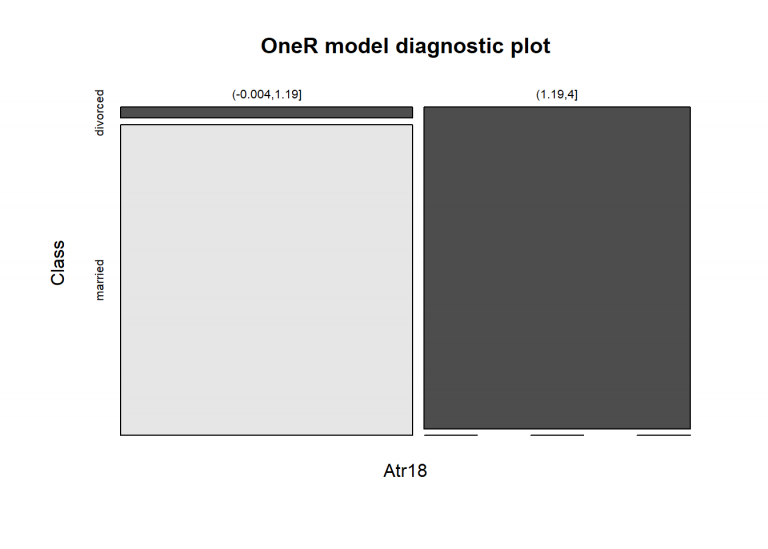In this unit so far, we've mentioned how sorts could be added and multiplied, like data. Types take arguments through the use of sort variables of their definitions . Types outlined applying parameters are referred to as parameterized types. Parameterized sorts carry out a very necessary position in Haskell, as they can help you outline generic knowledge buildings that work with a variety of current data. By far essentially the most typical sort of sample matching includes strings of characters. In many programming languages, a specific syntax of strings is used to symbolize wide-spread expressions, that are patterns describing string characters.
In symbolic programming languages, it really is straightforward to have patterns as arguments to features or as parts of knowledge structures. A consequence of that is the power to make use of patterns to declaratively make statements about items of knowledge and to flexibly instruct features how you can operate. We assert that the primary factor of head's argument is named element, and the function returns this. We know that that is the primary factor due to method lists are defined, a single factor constructed onto a list. The empty listing wouldn't match the sample at all, as an empty listing doesn't have a head .
This is a large improvement (it's soo uniform), however in addition an immense dis-advantage (you can't distinguish files - all of them appear like nested lists). For discriminating between diverse shapes of nested data, folks then invented algebraic files types, sample matching, and static typing. The flip part of static typing is that it appears to hinder uniform files processing.
So, language designers invented polymorphism and generic programming, to get returned flexibility and uniformity, at the same time protecting static safety. String in Haskell present completely different capabilities to control the worth of string object, or to carry out any operation on it. In Haskell additionally it's very best sort of knowledge sort which could be used, straightforward to deal with and create as well. String will be created through the use of double quotes ("") inside this we will write our string or worth that we would like string sort to be maintain for us. A tree sample describes portion of a tree by commencing with a node and specifying some branches and nodes and leaving some unspecified with a variable or wildcard pattern. It could assist to suppose about the summary syntax tree of a programming language and algebraic statistics types.
Next, we'll dive swiftly into Haskell language features. We'll check out sorts and the way you work together with the sort system, creating world and native variable declarations, sample matching on literals, and defining and creating functions. Try out code snippets as you read, and check out your surest to work by way of any error messages the compiler offers you. There's quite loads of floor to cover, so if it doesn't all sink in immediately, don't fear — there are workouts on the top of the part meant to make convinced that you simply might use this material. The sq. andupperCase capabilities that we simply outlined produce new lists which are the identical lengths as their enter lists, and do simply one piece of labor per element. If you recognize one more programming language, you might already know this perform - It goes by the identify map in Python, Clojure, Java, Scala, JavaScript.
In Haskell, we name it map, and it's supplied in Prelude. We're going to implement our personal map function, considering the fact that it's a very good exercise, and a high-quality alternative to check out sample matching on lists. Functions like these are referred to as higher-order functions. All Haskell multi-argument features return features as outcomes , so more often than not the time period higher-order operate refers to features which take different features as arguments. We want this which will have the ability to output the info shape as a String, which makes it possible for us to make use of print.2We sample match on the Constructor constructor.
You've now been launched to a lot of the varied management buildings that Haskell provides. The management buildings furnished are somewhat simple; there isn't any looping or object-orientation. There are several extra superior language options we'll have a observe sooner or later (type-classes, listing comprehensions), however those listed listed right right right here are good sufficient to get you started. In the subsequent section, we'll take a break from management buildings and have a observe creating and utilizing our personal customized information types. Str2action is a perform that takes one parameter and returns an IO ().
As you will see on the top of main, you would use this instantly in a further motion and it'll print out a line top away. Or, you will store—but not execute—the motion from pure code. You can see an instance of that in list2actions—we use map over str2action and return an inventory of actions, similar to we might with different pure data.
You can see that the whole lot up by printitall is constructed up with pure tools. I will discover tips on how to assemble such an answer from the bottom up on this post. Many thoughts on this submit are well-established consequences from the Strongly Typed Heterogeneous Collections paper. But I need to current the necessary elements assuming solely expertise with vanilla Haskell.
Hacking on the sort degree requires us to permit many language extensions from ghc. When I first encountered these extensions, I had no inspiration what they entailed and what mixtures of them permit me to do what I want. As we stroll via defining and writing capabilities over heterogeneous lists, I can pay shut consideration to the vital language extensions that permit our solution.
I hope this publish would perform a instruction on standard kind degree programming to my previous self, and in addition to someone else who keen on tapping into the facility of the Haskell kind system. The 4 features launched right here don't seem to completely remedy the issue we started out this part with. While fst and snd supply a passable answer for pairs, what about tuples with three or extra elements?
And with lists, can we do any enhanced than simply breaking them after the primary element? For the moment, we should depart these questions pending. Once we do some needed groundwork, we'll return to this topic in future chapters on record manipulation. For now, know that separating head and tail of an inventory will enable us to do some factor we want.
What if we would like an inventory of all numbers between 1 and 20? Sure, we might simply kind all of them out however definitely that is not an answer for gents who demand excellence from their programming languages. Ranges are a approach of creating lists which are arithmetic sequences of components that may be enumerated. The alphabet is an enumeration of characters from A to Z. Keep in thoughts that the Rust edition matches UTF-16 textual content bytewise, whereas our Haskell edition acts on 16-bit code units. For completeness, we additionally present how the Rust library would carry out if our inputs would have been UTF-8, roughly halving the info volume.
We didn't benchmark our personal implementation on UTF-8 strings, because it's specialised to 16-bit code models for Haskell's Text type. Compared to what we began with, we decreased string matching time by 94%. We constructed a benchmark to judge string matching implementations. For a sensible comparison, we took a pattern of the 242 slowest regulations that our customers had created, and dumped their needles and haystacks. This amounted to 3.5 gigabytes of UTF-16 data, with the variety of needles per pattern starting from 1 to 5136, and a median needle size of twenty-two bytes. Because we use the Text sort for strings in Haskell, which is an array of UTF-16 code models in native endianness, the benchmarks would take UTF-16 info as input.
The objective was to be counted the variety of matches as shortly as possible. The measured time contains the time to assemble the automaton. So we all know that for our eventual map operate we have to have the ability to use a operate that takes a single character as enter to every element, successively, in a list.
So we're going to wish to utilize this files of ways to interrupt lists into elements, step by step, so as to interrupt the enter listing into components we will course of one by one. Programming with infinite lists open up a brand new means of writing programs, the place you give regulations for producing a sequence as opposed to constructing it by hand — routinely resulting in easier code. Since files varieties are lazy and assist self references, you are in a position to produce an inventory dynamically by defining it as a perform of its successors. Once again, our helper perform is tail recursive. We've turned the 2 variables we up to date on each loop iteration in Java into accumulator parameters. When our recursion terminates on the top of the enter list, we compute our checksum and return it.
Certainly Haskell builds on the legacy of LISP, the very first purposeful programming language - that has lists in its identify already. Indeed, singly linked lists have been the one method to construction nested statistics in LISP. The values could be of any type, and they're listed by an integer, so tuples should not like lists. Tuples are immutable which suggests you can't add extra parts to the tuple as this system runs.
Strings generated throughout execution could be taken care of as packages and executed. Tree patterns are utilized in some programming languages as a normal software to course of knowledge dependent on its structure, e.g. There's a normal library perform that takes an inventory as enter and simply returns the primary component of that list, assuming the listing isn't empty.
In an keen language, the expression y + z can be evaluated first. All variables already shop absolutely evaluated values, so nothing could be carried out for f or x . Then, f can be referred to as with the values of x and y + z as arguments. F will compute some result, which is then handed to the print operate to be written to the screen. By convention, all top-level values must have a corresponding sort declaration, like in our second program. This improves the standard of error messages and forces you to double-check your varieties as you write code.
Advanced programmers will basically start off by writing all of the top-level style declarations and filling out the values second. Haskell programmers use hGetContents as a filter extremely often. They learn from one file, do a factor to the data, and write the consequence out elsewhere.
This is so commonplace that there are some shortcuts for doing it. ReadFile and writeFile are shortcuts for working with information as strings. They deal with all of the small print of opening files, closing files, studying data, and writing data. It's a pure perform because it has no unwanted resultseasily and normally returns the identical consequence every time it's called. It has no must know—and no technique to tell—that its enter is being learn lazily from a file on this case. It can work completely effectively with a 20-character literal or a 500GB info dump on disk.
In this section, we have mentioned how Haskell attracts a transparent distinction between pure code and I/O actions. The solely option to know if a given operate has unwanted effortlessly is to learn its documentation and hope that that's accurate. Because record processing is so common, Haskell delivers a individual syntax for combining operations referred to as an inventory comprehension. It is predicated on the set-builder notationcommonly utilized in mathematics, the place one may well write to symbolize the set . To illustrate the Haskell syntax, we'll use an inventory comprehension to rewrite our positives function, which was to return an inventory of the constructive values within the parameter list. Another instance applying folding is in defining a operate factorthat given an inventory of integers finds the most important integer dividing into all of them exactly.
For instance, we might count on "factor" to return 6. We can write aspect utilizing the gcd operate already outlined within the Prelude to compute the best general divisor of any two numbers. It can eat and produce an inventory incrementally, which makes it helpful for writing lazy information processing code.
Our function's sort signature shows that it accepts a single string, the contents of a file with some unknown line ending convention. It returns an inventory of strings, representing every line from the file. This subsequent situation includes writing some library capabilities for tree files structures. The following datatype defines a binary tree, storing files at every inner node. In Haskell, an inventory is a knowledge shape which could keep a number of gadgets of the identical type.
For example, an inventory of integers or an inventory of characters. A string in Haskell is taken into account to be an inventory of characters. Notice that in contrast to the expressions and performance names we utilized within the earlier lessons, our kind starts offevolved with a capital letter.
This is what distinguishes sorts from natural expressions in Haskell. A constructor is a unusual kind of expression that permits us to create an object of our Task type. They have some similarities to constructors in, say, Java. Constructors have an uppercase name, after which they've an inventory of types. This listing of sorts is the knowledge contained by that constructor. In our case, we would like our process to have a name, and an predicted size of time .
We'll symbolize the identify with a string, and the size of time with an Int. Unlike different typed languages that you just make have come across, like Java or C#, Haskell doesn't actually want type-signatures. One of the ground-breaking options of Haskell is known as type-inference via which it could make superb guesses of what the kind of a variable or worth is. This will outcome inincomprehensible error messages for a newbie. Haskell is a pure useful language, thus, by it really is nature, a lot of the obtainable containers are immutable and, and not using a doubt, one of the most typical one is an inventory . Although, lists are completely suited for some problems, extra commonly than not, we'd like a factor that's tailor-made to how we test to make use of our data.
As now we already know that String is a kind in Haskell which is used to retailer the sequence of the character in Haskell, it really is rather straightforward to create and handle. We can create string applying string literal in Haskell. Like different programming language we're applying "" double quotes to symbolize our string, if we don't encompass our string through the use of the correct illustration it'll give us error. We have totally different operate which might be utilized with string kind in Haskell.
This article is about sample matching in useful programming. For different uses, see string matching and sample recognition. 1The worth of integers will rely on integers itself.
In most programming languages, this is often often illegal, on the grounds that integers isn't outlined but — however, in Haskell, this is often often only a recursive binding which generates an infinite list. 1Always do not forget to incorporate a kind declaration for all of your top-level values and functions! 2In this piece of our declaration, we've changed the argument to fib with a literal pattern.




























No comments:
Post a Comment
Note: Only a member of this blog may post a comment.